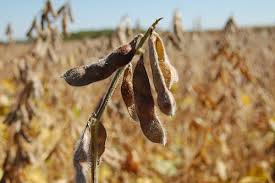
Brookings S.D. (KELO AM) - Soil testing has proven to be a reliable tool to guide fertilizer recommendations. However, growers are looking for additional ways to confirm that soil and fertilizer applications are meeting the nutritional needs of the soybean plant to maximize yield," said Nathan Mueller, an assistant professor and SDSU Extension Agronomist in SDSU's Plant Science Department.
Mueller and his colleagues are working to help soybean growers find those answers. Through a partnership with the South Dakota Soybean Research and Promotion Council, SDSU researchers are focused on improving our understanding of plant nutrient analysis, commonly called tissue testing, as a tool to monitor soybean plant nutritional health. Mueller explains that soybean plant nutrient analysis research in Ohio and Illinois back in the 1960's generated guidelines for the amount of a particular nutrient a healthy plant should have, called a sufficiency range. These sufficiency ranges were determined from a specific plant part, called a trifoliolate or leaf, during flowering prior to pod set. Mueller says this is similar to human health screenings that determine if someone has a normal or sufficient range of iron and glucose in their blood. What's surprising - and concerning - is that the same nutrient sufficiency ranges for soybean have been used without much alteration over the last five decades.